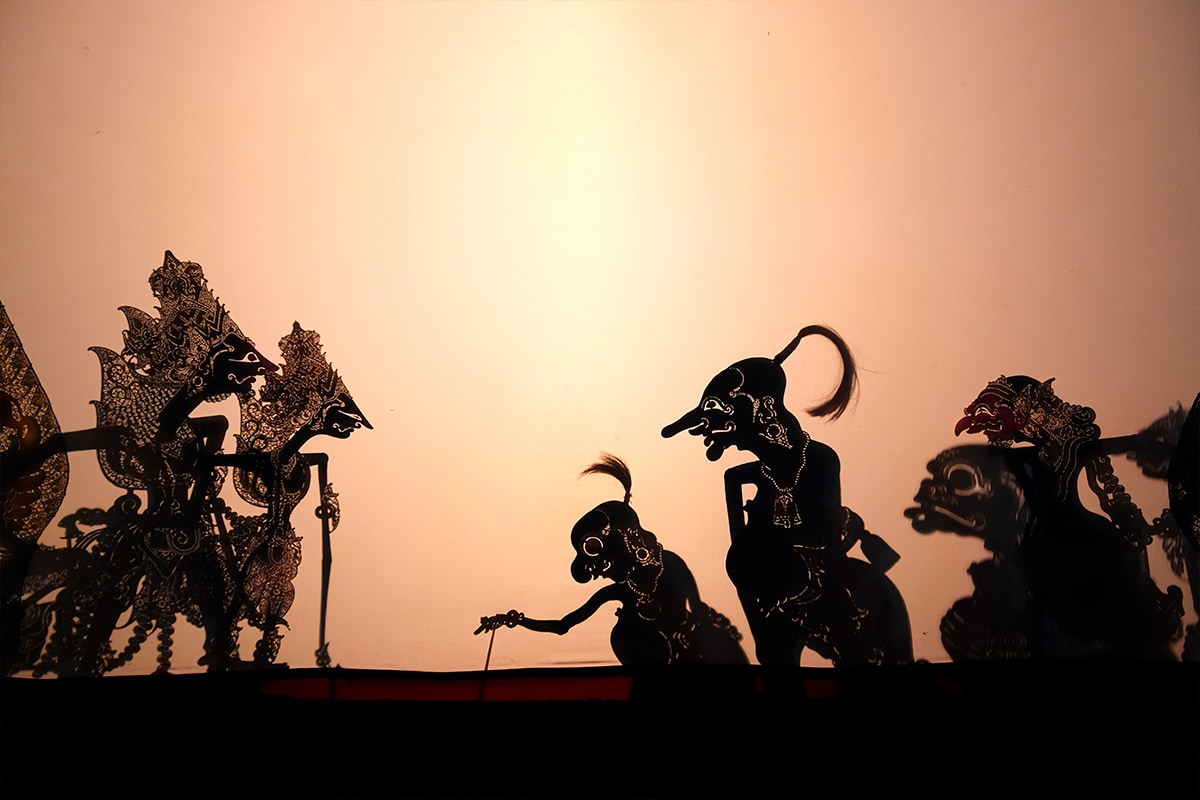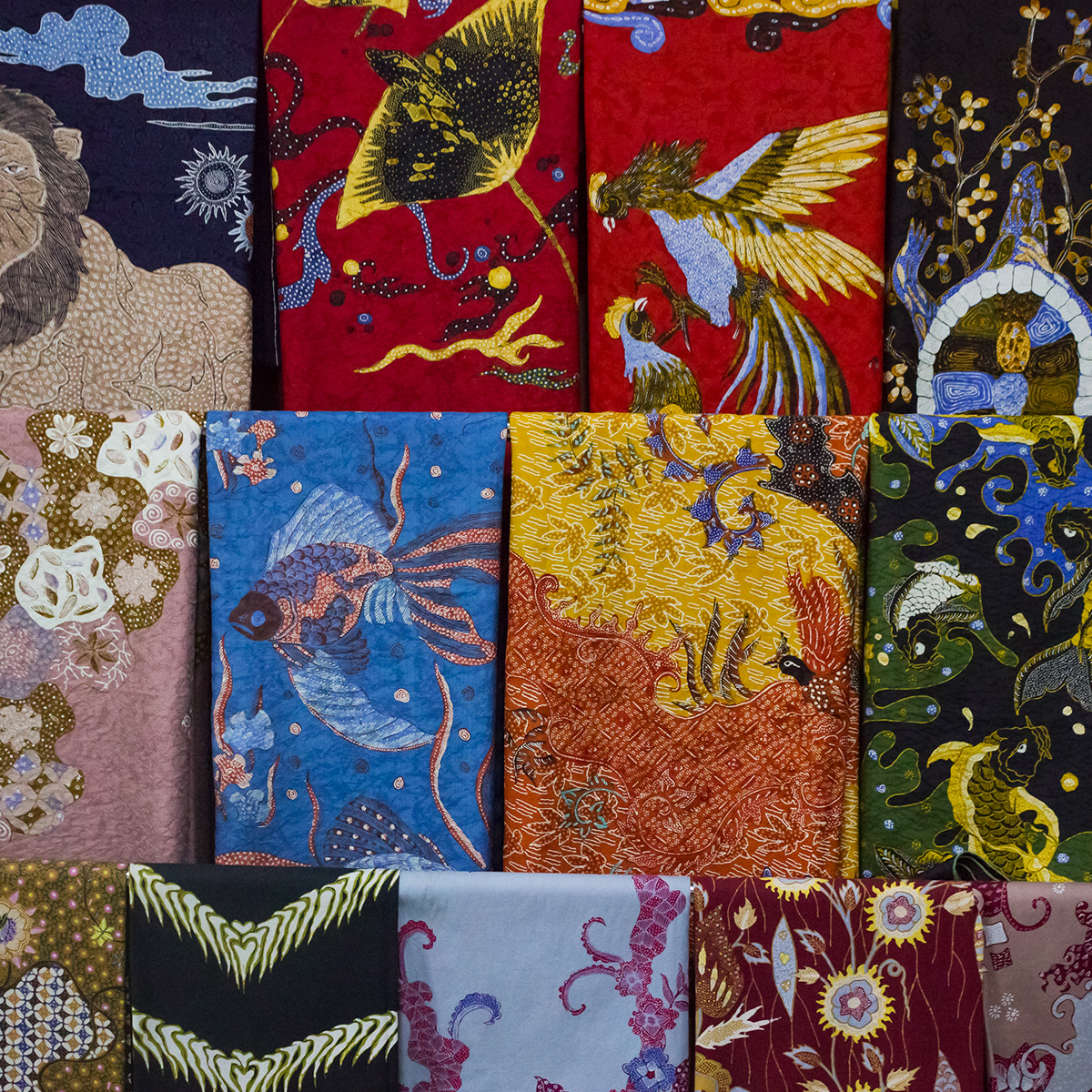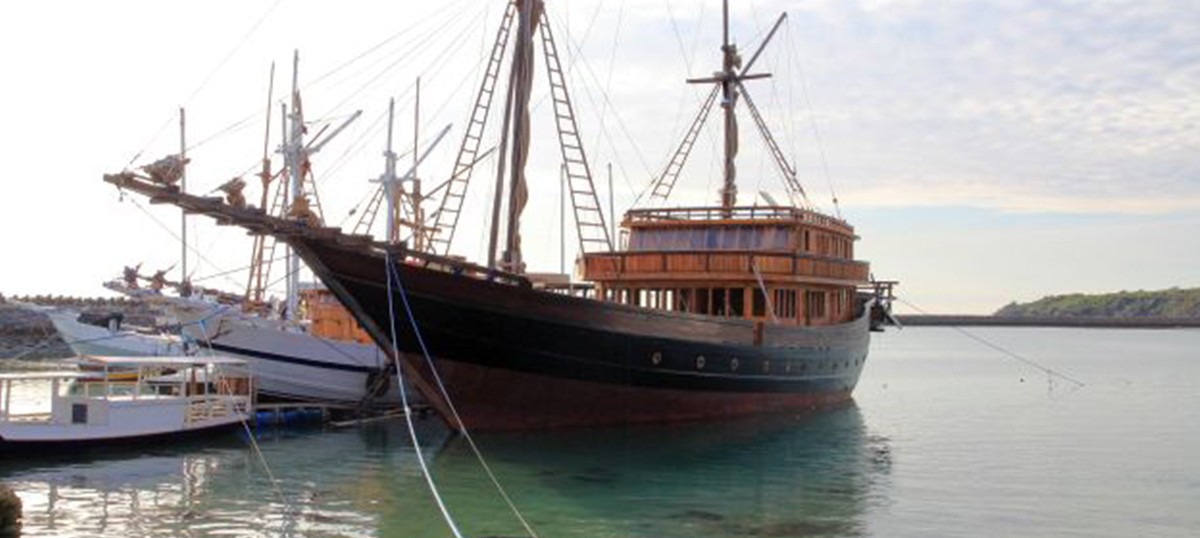In terms of cultural heritage, Indonesia has plenty to offer since it dwells an abundance of long-preserved traditions originating from hundreds of local ethnicities. According to UNESCO, the term ‘cultural heritage’ includes traditions or living expressions inherited from ancestors and passed on to the descendants, such as oral traditions, performing arts, social practices, rituals, festive events, knowledge and practices concerning nature and the universe or the knowledge and skills to produce traditional crafts.
As a big part of cultural preservation, UNESCO has listed 12 Intangible Cultural Heritages from Indonesia, which will be explained in this article.
1. Wayang Puppet Theatre, 2008
Those who have wandered around the island of Java might find themselves familiar with Wayang Puppet Theatre. It is a form of traditional storytelling using the shadows thrown by puppets manipulated by sticks against a translucent screen lit from behind. The performance is conducted by a master of puppet who also acts as a narrator and voice actor for puppet figures, accompanied by gamelan music played in the background.

In general, Wayang Puppet Theatre tells stories from the Mahabharata and Ramayana epics, but are not limited to them. The master of puppet can also play modified scripts, known as ‘carangan’. If you are visiting Indonesia, you can find Wayang Puppet Theatre shows in Sonobudoyo Museum or Wayang Jogja Night Carnival in the Special Region of Yogyakarta.
2. Kris, 2008
Kris is a sharp blade-type traditional weapon originating from the island of Java which has a variety of cultural functions known in the western and central regions of Indonesia. The shape is identical and easily distinguished from other sharp weapons because it is not symmetrical in the base and has winding edges.

In the past kris served as a weapon in a duel or a battle, as well as a complementary object. In today's use, kris is being used more as an accessory object (ageman) in a traditional dress or simply just being a collector’s product.
The use of kris spreads in the community occupants that have been affected by Majapahit ear, such as Bali, Java, Nusa Tenggara, Sumatra, Kalimantan, Sulawesi, and Malay Peninsula. It is acknowledged and listed as one of the Masterpieces of Intangible Cultural Heritages by UNESCO.
3. Batik, 2009
In general, batik is a fabric painted in a night candle liquid using a tool called canting resulting in a high-value, exquisite traditional garment product. The word batik itself is presumably derived from the word 'ambatik' in Javanese, which translates into 'a cloth with little dots'. Since UNESCO acknowledged batik as one of the Masterpieces of Intangible Cultural Heritages by UNESCO in 2009, batik is more internationally known as the ideal representation of Indonesian traditional clothing.

There are approximately thousands of different batik designs in Indonesia. Some designs have been culturally associated with traditional festivals and specific religious ceremonies. In the past, locals believed that certain cloth had magical powers to ward off bad luck, while other pieces could also bring good luck.
4. Education & Training in Batik, 2009

Not only enlisting the product, UNESCO also has enlisted the education & training in Batik in Pekalongan as an intangible cultural heritage. It was selected in 2009 on the Register of Good Safeguarding Practices. The program was initiated by Batik Museum in 2005 in collaboration with the educational authorities of the city with the main objective of increasing the awareness and appreciation of the cultural heritage of Indonesian batik, including its history, cultural values, and traditional skills, among the Indonesian youth.
5. Angklung, 2010
Angklung is a traditional musical instrument that originated in the land of Sunda or West Java region. This traditional musical instrument is made of bamboo and is played by shaking to produce a tone. Therefore, to create a harmonious melody, angklung should be played collectively in an ensemble.

If you’re interested in seeing firsthand an angklung music performance, you can visit Saung Angklung Udjo in Bandung, West Java. It was established in 1966 by Udjo Ngalegena with the objective of making angklung an attractive and harmonious music art performance.
6. Saman Dance, 2011
Saman dance is one of the traditional dances from Aceh, which originated from the Gayo plateau and was developed by Sheikh Mohammad As-Samman in the 17th century. It is considered a fairly unique traditional dance because it doesn't use any musical instrument to lead the rhythm. Rather, the dancers sit and move only with their head, torso, and arms while the beat is formed using hand clapping and shoulder clapping.

The lyrics sung in Saman dance uses Arabic and Gayo languages. In the past, Saman dance was usually performed to celebrate important events in the customs and the people of Aceh. This dance is also performed to celebrate the birthday of the Prophet Muhammad.
7. Three Genres of Balinese Traditional Dances, 2015
Being a vital part of Balinese culture, Balinese traditional dance is often associated with religious ceremony. However, since the 1950s, with the rapid development of tourism, several dances have been displayed on activities outside of religious events with several modifications.

There are three genres of Balinese Traditional Dances which have been recognized as part of Intangible Cultural Heritages from Indonesia by UNESCO. Those three genres are sacred (wali), semi-sacred (bebali), and that which is meant for enjoyment by communities at large (bebalih-balihan).
Wali and bebali dances can only be performed at a certain place and time. Wali dances are usually presented in the inner yard of a temple and bebali dances in midyard. Meanwhile, the bebalih-balihan dances can be performed on the outside yard in entertainment-related events.
8. Noken, 2012
Noken is a traditional bag originated from Papua that is brought using a head and made of fiber bark. Similar to bags in general, this bag is used to carry daily necessities. Papuans usually use it to bring agricultural products such as vegetables and also to carry items to the market.

Noken traditional bags bring a symbol of good life, peace, and fertility for the people in Papua, especially in mountainous regions of Central Papua such as the Mee/Ekari, Damal, Yali, Dani, Lani and Bauzi tribes. What's interesting about the Noken traditional bag is only the Papuans are allowed to make Noken.
9. Pinisi, 2017
Phinisi, or sometimes also spelled as pinisi, is a traditional sailing vessel originated from the seafaring tradition of the Bugis ethnic group of South Sulawesi. A pinisi ship has seven to eight screens on two poles, has a length of around 50-70 feet (15.24 m - 21.34 m), with water lines around 34-43 feet (10.36 m - 13.1 m) when the load is light.

According to I La Galigo, the ancient manuscripts of the Bugis, pinisi ships have been around since the 14th century. The ship is usually built using traditional equipment following exact prescribed traditional techniques that have been passed down from generation to generation. Its construction does not only involve strength and technique but also – as the locals believe – supernatural powers, in which every stage requires strict adherence to certain rituals and ceremonies.
10. Pencak Silat, 2019
Pencak Silat is a form of traditional martial art which originated in the Malay region part of Indonesia (Sumatra and Java) and then spread across the archipelago. Aside from being a self-defence sport, traditions of Pencak Silat also encompass mental, spiritual, and artistic aspects. The movements of Pencak Silat are heavily influenced by many elements of art which encourage harmonious body movements.

The term ‘pencak’ is mostly known in Java, while ‘silat’ is familiar in West Sumatra, describing a group of martial arts with strong likeliness to each other. Furthermore, each region has its own moves, styles, accompaniments, music, and supporting equipment including costumes, musical instruments, and traditional weapons. The teachings of Pencak Silat mainly consist of maintaining a relationship with God, human beings, and nature. The combat is trained in various techniques to encounter attacks or any dangerous situations based on sole principles to protect themselves and others.
11. Pantun, 2020
Pantun is a kind of traditional poetry from Indonesia that is bound to rhyme structure. In general, pantun consists of four lines and the writing is symbolized by the letter A-B-A-B. The first two lines are called sampiran (opening), while the last two lines are called isi dan tujuan (content and purpose). Pantun often used to express intricate ideas, emotions, or sometimes to just have fun interactions with other people. It is known as the most widespread oral form in maritime Southeast Asia and has been used in many parts of the region for at least 500 years.

The example of pantun is as follows:
“Jalan-jalan ke Kota Blitar
jangan lupa beli sukun
Jika kamu ingin pintar
belajarlah dengan tekun”
translated as
(Traveling to Blitar City
Might as well buy a breadfruit
If you want to be a smarty
Read books and don’t waste any minute)
12. Gamelan

If you've ever visited the islands of Java and Bali, most likely you've heard gamelan played in some tourist attractions, restaurants, or even airports. Gamelan is the traditional ensemble music consisting predominantly of percussive, ornate instruments made of hand-forged metal. The origin varies from Javanese, Sundanese, to Balinese. The vital instruments in Gamelan ensembles are xylophones, gongs, gong-chimes, drums, cymbals, string instruments and bamboo flutes.
There are precise rules and techniques that must be followed when playing Gamelan ensemble instruments, which involves tuning, layout, rhythmic and metric patterns and performance. That is why the music sounds traditionally distinctive and memorable to those who have listened to it. Men, women and children of all ages can participate in playing Gamelan ensemble instruments. The music is typically performed in religious rituals, ceremonies, traditional theatre, festivals and concerts, and also tourist attractions in Indonesia.
There are so many things in Indonesia that you can learn and enjoy as a cultural entertainment and also life philosophy as well. We hope that this article can motivate you to wait patiently for a future holiday to Indonesia and help you to prepare for your journey. Meanwhile, stay safe and don’t forget to practice healthy habits. When the time is right, we will welcome you back here with open arms.























